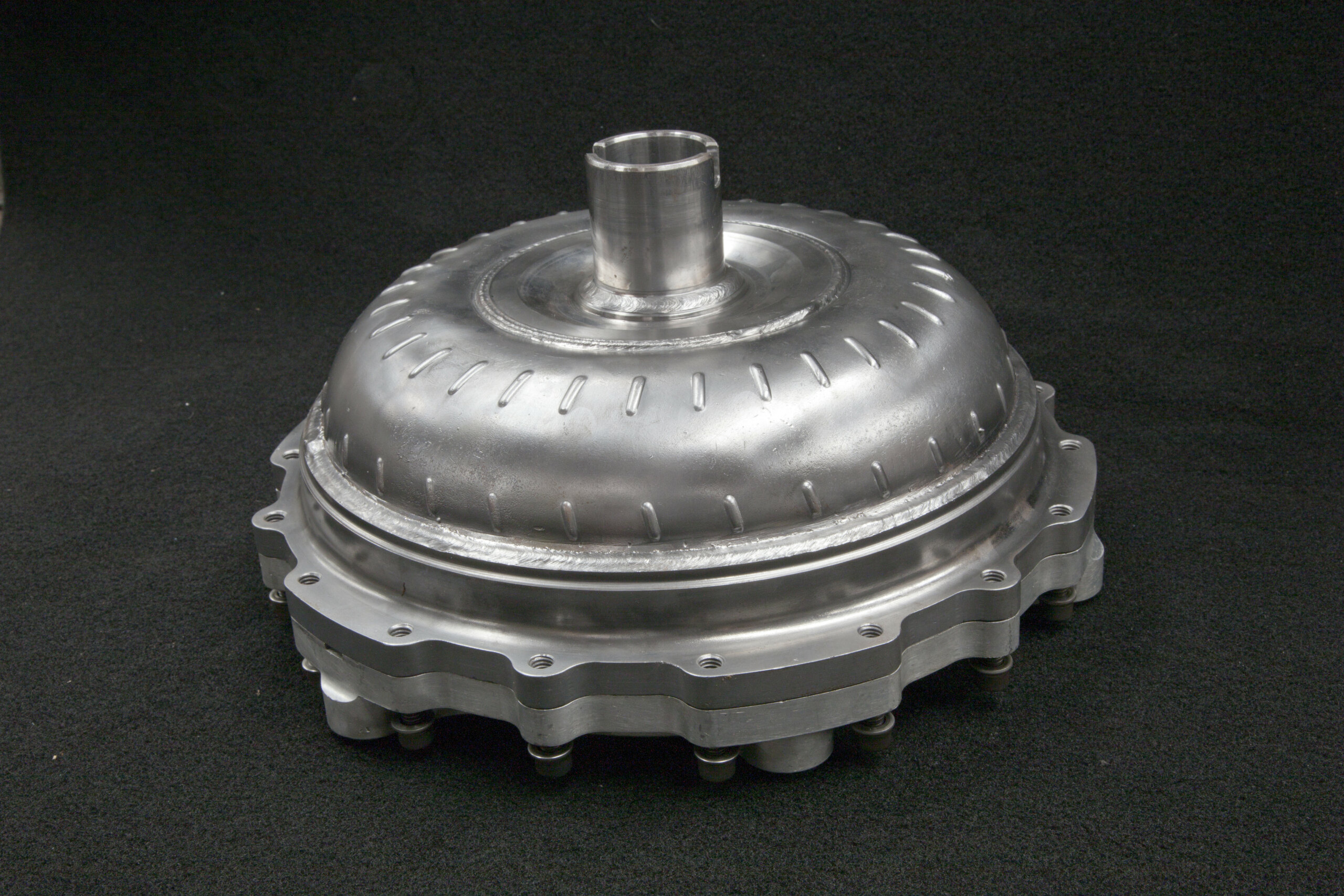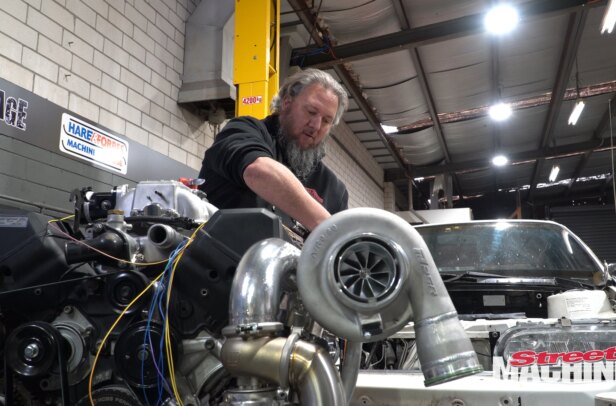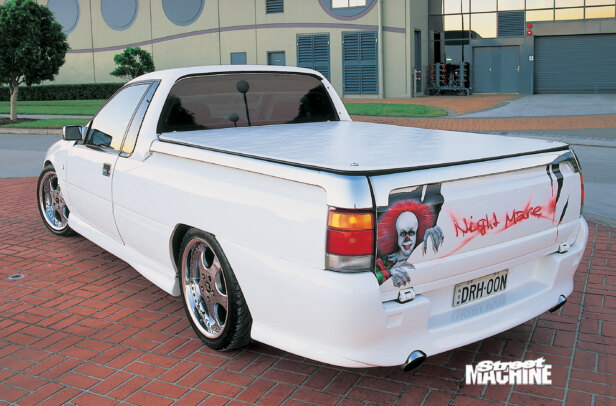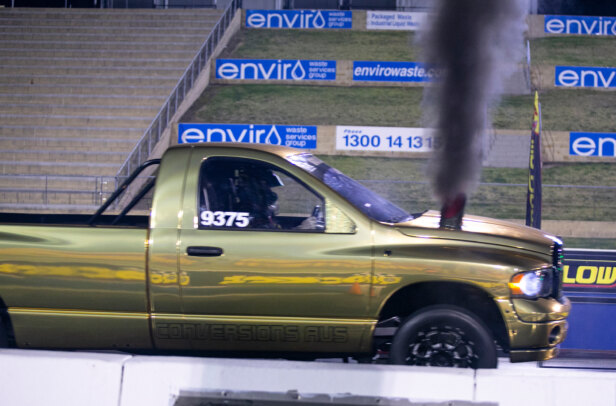BOLT-together torque converters are the new hotness, but what’s so special about them, and why would you want to put one in your car? For the answers, we asked Simon ‘Gonzo’ Travaglini from AllFast Torque Converters, a walking encyclopaedia who understands how the black magic and voodoo works in a converter. He’s also a highly successful drag racer and builder of Carnage-proof transmissions that even Scotty Taylor can’t blow up!
WELDED CONVERTERS
To weld a converter together, a specialised welding machine is used. It’s capable of automatically aligning the two halves, tacking them together and then seamlessly welding them. The converters are all pressure-tested afterwards to check for any pinholes.
The two halves of the converter can pull together once the weld cools, so allowances are made to ensure that internal clearances will be correct after the welding process.
The welding machine tacks the two halves together; depending on the size of the converter, it could do four or six tacks. This ensures nothing moves as the full bead is laid around the converter’s circumference.
SIMON SAYS: Traditional torque converters have the front cover (the part bolted to the flexplate) and the impeller welded together. In contrast, a bolt-together converter has a flange between these two components with a seal in between, with the whole lot fastened together with bolts. This allows the two halves to be split and reassembled without requiring specialised equipment like a lathe or a welding machine.
Bolt-together converters have been around for as long as torque converters have existed. Some early Cadillacs and Rolls-Royces not only featured bolt-together converters, but also had the flexplate incorporated into the design so that the front cover bolted directly to the crankshaft. Most modern earthmoving equipment has bolt-together converters too, mainly due to the size of the units, which are often over one metre in diameter and are assembled piece by piece directly onto the transmission shaft.
BOLT-TOGETHER CONVERTERS
It’s pretty obvious why they’re called a bolt-together converter. Instead of being welded, the two halves of the converter are bolted together and sealed with an O-ring.
For some applications, a custom-fabricated stator may be required. This particular unit is from a Coan Racing converter, although usually they wouldn’t have holes in the vanes. This may have been done in an attempt to reduce torque multiplication.
To stop the stator from spinning in a reverse direction as the trans fluid is forced against it, a one-way clutch is required. The unit shown is a mechanical-diode design for high-horsepower applications, whereas OEM units use a roller sprag or cartridge sprag for quieter operation. For race-only vehicles, you can also use a spragless converter, where the clutch is replaced with a solid steel unit that fixes the stator in place.
The stator at the top left is aluminium; the other four are steel and come in various vane angles to allow fine-tuning of the converter’s stall characteristics. AllFast does use aluminium stators for performance applications, but they limit the horsepower rating. The steel stator is stronger and, more importantly, can handle heat better – particularly in turbo applications when getting on boost.
The vanes on this stator have had a flat area machined into them to reduce the resistance of fluid flow. Laying the fins over by milling them will increase the stall speed by directing the oil at the impeller at a shallower angle. This is a common practice in converter modification and manufacture.
This is the turbine side of the converter with the stator in place. When the car is stopped, the fluid hitting the motionless stator is redirected into the impeller at an angle, creating more force on the impeller and multiplying the torque going to the turbine. As the car starts moving, that increased torque helps the car accelerate.
The fluid from the impeller enters the outside edge of the turbine and comes out through the inner vanes where it then hits the stator. The turbine side of the converter, being the driven element, isn’t usually modified, although AllFast does furnace-braze them for added strength.
This is the inside of the lid, showing the Torrington bearing at the centre. In lock-up converters, there would be a flat machined surface for the clutch pack to engage against.
This is the impeller side of the converter. The fluid enters through the centre of the converter from the transmission pump. Centrifugal force then flings the fluid to the outside edge. The angle of the vanes plays a large part in a converter’s stall speed.
Various impellers with differing vane angles are used depending on the application. These have all been salvaged from OEM converters, cleaned up and then sent off to be furnace-brazed for extra strength. Proof that street machiners love the planet and are always recycling!
AllFast Torque Converters supplies these bolt-together kits to other converter shops all over Australia. The individual pieces are beautifully machined and seal via an O-ring, which (along with the bolts) comes with the kit. The aluminium base reduces weight considerably, while the ring is steel and allows you to weld whichever impeller suits the application.
FIVE FAST FACTS
- More negative impeller angle means a higher stall speed
- A shallower angle on the stator vanes means a higher stall speed
- The number of vanes in the stator affects torque multiplication and stall speed
- Interior clearances also affect stall speed; the larger the clearances, the greater the stall speed
- The turbine is a driven element and doesn’t affect stall speed
It appears that Joe’s Performance Torque Converters in Sydney was the first company to offer a bolt-together converter for performance use, advertising an eight-inch bolt-together unit in the 1980s. It was essentially a normal eight-inch high-stall converter but with two metal rings welded on the joining face and a series of bolts holding the two halves together.
Jim Patterson, the founder of AllFast Torque Converters, experimented with a bolt-together converter in his BB/Gas VK Commodore (the first small-block sedan to run a seven-second pass) in 1991. However, he opted to go with a welded item once he had the combination mastered, as he felt the weight of the metal rings hampered the car’s performance: “We spend so much money making our crankshafts, conrods and pistons lighter; why would we want to make the converter heavier?”




Comments